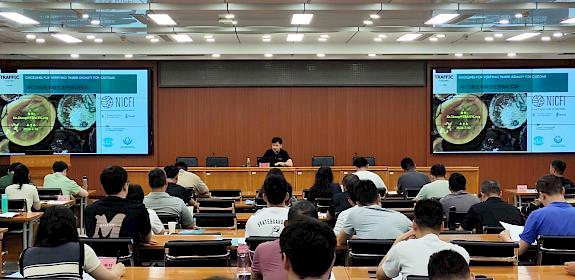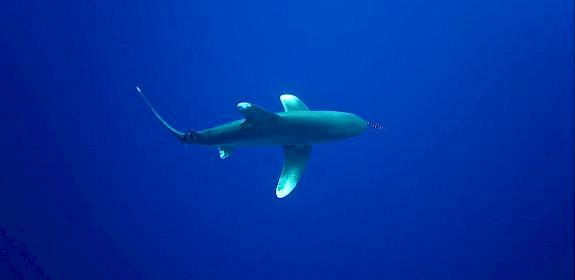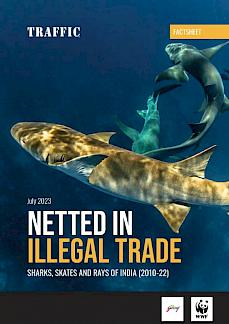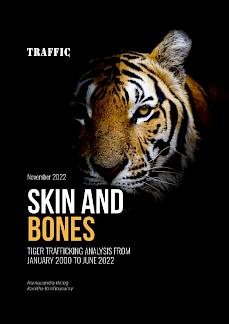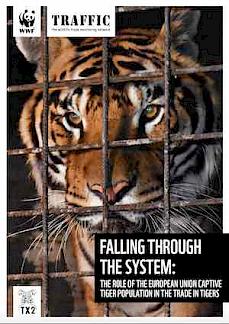
Unless stringent action is taken at CoP19, captive breeding facilities of tigers will seriously undermine conservation efforts to safeguard the species.
At the 18th meeting of the Conference of the Parties to CITES in 2019, Parties adopted a series of Decisions for Asian big cats that were ambitious and wide-ranging, addressing a wide variety of issues such as illegal trade, law enforcement, demand reduction and the potential threat posed by poorly regulated captive breeding facilities. It is unfortunate that the pandemic delayed the timely implementation of many of these Decisions, particularly given the urgency of addressing the poaching and illegal trade problems being faced by the species involved.
At CITES CoP19, document CoP19 Doc. 68 on ‘Asian big cats’ has proposed that some of these Decisions, particularly those related to regulating the activities of captive breeding facilities and undertaking behaviour change, be incorporated into the text of Resolution Conf. 12.5 (Rev. CoP18) on ‘Conservation of and trade in tigers and other Appendix-I Asian big cat species’. This is a welcome development as it will provide Parties with long-standing guidance on implementing activities in these crucial areas of work in the long term. However, the document proposes the deletion of other Decisions related to illegal trade, including those recommending joint investigations and operations aimed at disrupting organised crime networks and law enforcement cooperation to address cross-border trade from tourist markets. Given the lack of effective action now to address these specific issues, TRAFFIC believes these specific activities should also be considered for inclusion in the Resolution.
The effectiveness of these activities will, however, depend on the effort dedicated to the implementation of the Resolution and the timely reporting of progress. Inconsistent and low rates of reporting by range States for tigers and other Asian big cats on measures taken to comply with Resolution Conf. 12.5 seen thus far is a matter of concern. If the Resolution is to be implemented effectively, it is important that there is a mechanism in place to ensure progress on the implementation of the recommended actions is measured in a structured way so that implementation gaps and weaknesses can be identified, remedial measures can be taken, and support can be found where it is needed. For example, the development of an action plan or work programme for the actions needed can provide the structure and specific time-bound and/or country-specific actions needed to monitor progress effectively.
Parties at the CoP should assess the reporting mechanism needed for effective implementation of this Resolution, determine whether they are effective and make recommendations as needed. For example, as many of the actions needed will involve implementation by Parties in particular range States, Parties at the CoP may wish to consider establishing an inter-sessional Asian big cat working group that can provide such a mechanism. If so, Parties may wish to consider the establishment of an in-session Working Group that can draft the Terms of Reference for such a Working Group.
CITES has also, in the past, engaged independent consultants to conduct reviews of the implementation of Resolution Conf. 12.5 (and associated Decisions). These have been very useful in providing Parties with recommendations on actions needed to strengthen legislative and regulatory measures; national law enforcement; demand reduction, education and awareness; prevention of illegal trade in parts and derivatives from facilities for keeping Asian big cats in captivity; and management of national and privately-held stocks of parts and derivatives. Parties may wish to consider commissioning another such review, especially given the delays and barriers to implementation that have been experienced due to the pandemic in the past three years.
Many of the actions proposed in the Decisions deal with the issue of facilities that breed Asian big cats in captivity. A TRAFFIC report that was released at CoP18, ‘Skin and Bones: Unresolved’ found an estimated minimum of 2,359 tigers seized between 2000 and 2018 across 32 countries and territories globally, resulting from 1,142 seizure incidents. A significant number of tigers from captive sources were seized during this period which illustrates the recurrent threat regarding the leakage of captive tigers into the illegal market. The study found that over half (58%) of the tigers seized in Thailand and 30% in Viet Nam were identified as originating from captive breeding facilities.
Due to a combination of lack of funding and COVID travel restrictions, progress on the implementation of the CITES missions to captive breeding facilities that were envisaged in the CoP18 Decisions has been significantly delayed. While these obstacles have since been overcome somewhat, no Missions have been conducted to date (though the Secretariat has indicated in this document that it has secured funding to undertake some of these missions and expects to be able to report to SC75). The undertaking of these missions must be a priority. It is also hoped that the appropriate experts who will be conducting the missions would benefit from some guidelines to assist them in ensuring the inspections meet the objectives of the Decision. Parties at the CoP may consider suggesting guidelines for the missions that will allow them to assess elements of the operations of these facilities, such as:
- compliance to relevant CITES provisions and national laws and regulations
- clear articulation of what the primary purpose of the facility is
- information needed to determine the economic and financial feasibility of the stated purpose- standard operating procedures
- greater detail on how records are kept, data management and reporting done
- greater detail in terms of how the stock/inventory system is run and how it is audited
- security in terms of transport, storage and disposal
- photographic, marking, DNA forensics and other identification systems used
- financial accounting
- history of previous infractions and steps taken to address these
Consideration should also be given to guidance for Parties that can be developed on the operation of such facilities and the trade of captive-born and bred live tigers and their parts and derivatives.
Seizures of tigers from captive facilities continue and serve as a stark reminder that, unless stringent action is taken at CoP19, such facilities will seriously undermine conservation efforts to safeguard this species.


